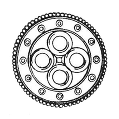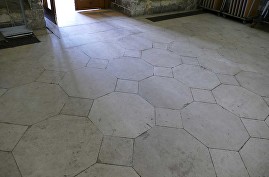CANTERBURY HISTORICAL
& ARCHAEOLOGICAL SOCIETY (CHAS)









Basics
Geology: shelly limestone
Rock unit: Bee Low Limestone Formation
Age: Carboniferous
Provenance: Middleton, Derbyshire
Where to see examples
Hopton Wood Stone (used as floor stone)
 HOME
CONTACT US
MAIN SITE
HOME
CONTACT US
MAIN SITE
click to enlarge and read caption

© Geoff Downer 2019
